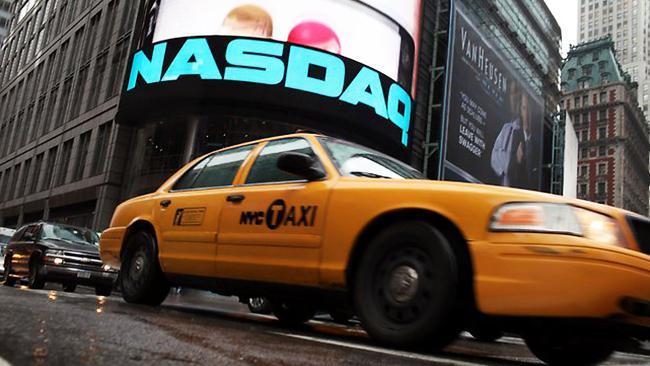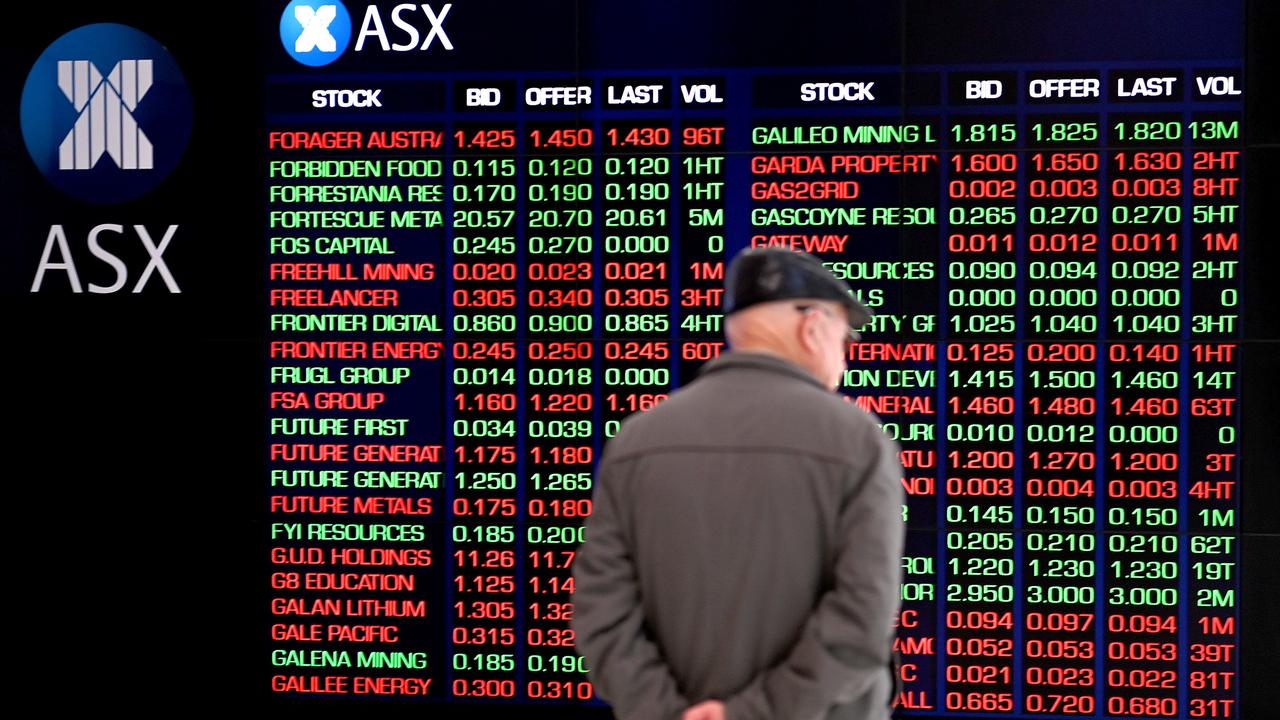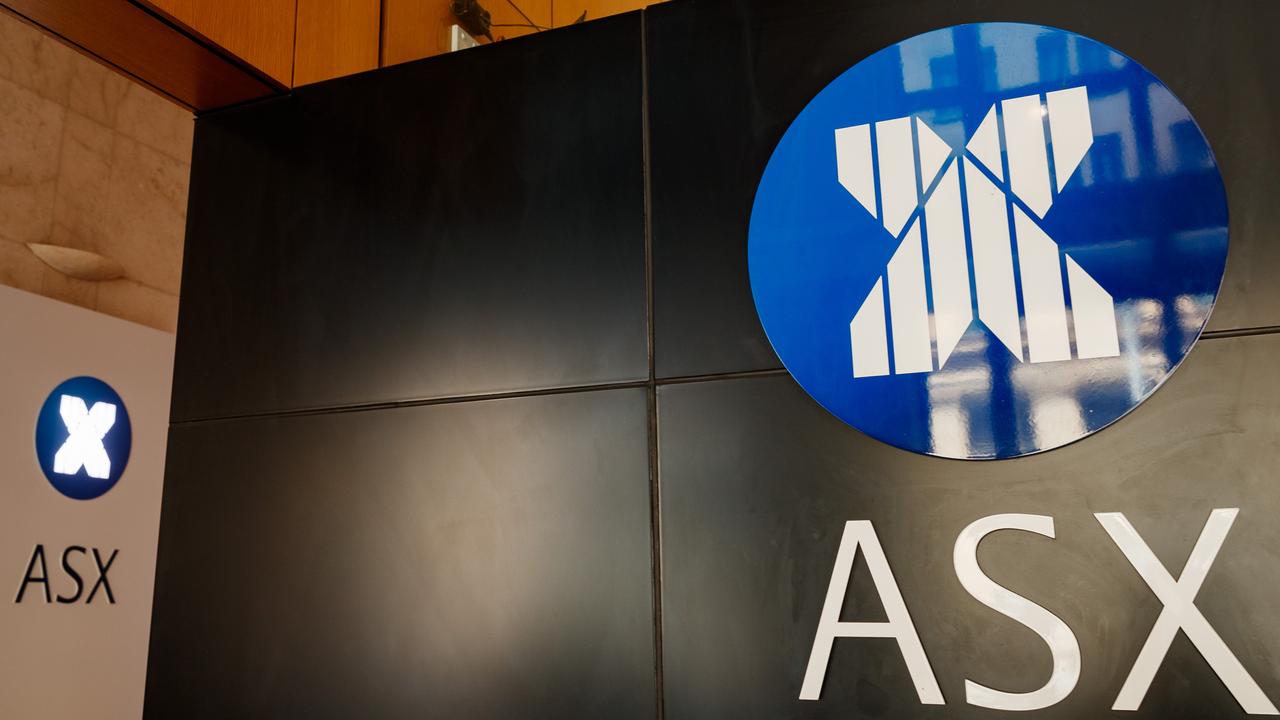Dow plunges more than 500 points as oil prices keep falling
THE Australian share market has opened higher aftertraders sweated through another bloodbath on markets overnight.

UPDATE
THE Australian share market is up sharply as bargain hunters plough back in.
Despite major sell-offs in the US and UK overnight, local investors are buoyed by the S&P 500 futures recovery in after hours trading and the local SPI futures finishing up by around 14 points as well, Commsec market analyst Tom Piotrowski said.
“The test will be in that window that proceeds the opening of the Chinese market,” Mr Piotrowski said.
“If we get a sense that the rest of the region is going to get on board with this recovery then we’ll stand a better chance of sustaining the improvement that we’re seeing at the moment,” he added.
The Chinese market will open at 1230 AEDT.
The benchmark S&P/ASX200 and the broader All Ordinaries indices are up 1.6 per cent and 1.5 per cent, respectively, after a late bounce in US trading.
The Dow Jones Industrial Average closed 1.6 per cent lower in a volatile session, and the benchmark FTSE 100 index closed down 3.5 per cent.
CMC Markets chief market strategist Michael McCarthy said the key for markets is whether last night the huge trading ranges and sharp turnaround represent a capitulation, or the beginning of a much deeper problem.
“The next 24 hours are crucial to the near and medium term outlook for markets,” he said in a research note.
Finance and resource stocks led the gains in early morning trade, with Insurance Australia up 20 cents at $5.17, Rio Tinto up $1.25 to $39.00 and Origin Energy up nine cents at $3.55.
In the financial sector, Macquarie Group was up $1.57 at $73.92. The big four banks were all up, with Commonwealth Bank up $1.20 at $78.81, ANZ up 24 cents at $23.74, and Westpac up 44 cents at $30.50. National Australia Bank is 28 cents higher at $27.02. Energy giant Woodside Petroleum is also getting a boost, up eight cents to $25.45, despite posting a sharp fall in revenue due to lower oil and gas prices.
KEY FACTS
— At 1042 AEDT the benchmark S&P/ASX200 index was up 70.63 points, or 1.5 per cent, at 4912.1 points.
— The broader All Ordinaries index was up 66.8 points, or 1.4 per cent, at 4965.5 points.
— The March share price index futures contract was up 62 points at 4864, with 2,219 contracts traded.
— National turnover was 457.5 million securities traded worth $1.06 billion.
EARLIER
TRADERS sweated through another bloodbath on markets overnight as red figures dotted screens from Europe to the US and everywhere in between.
Oil plunged, base metals dived, US stocks skidded and European markets slumped. At least gold rose, though a strong session for one of the world’s most popular safe havens is hardly cause for celebration.
Fear undoubtedly gripped Wall Street for a period as early losses turned into a 3.2 per cent rout by lunchtime, though a late recovery fortunately turned a horror show into something more akin to a blip.
Again weak sentiment in crude markets appeared to be the driver of the broad malaise as oil prices struck new 12-year lows.
Energy stocks ended down 3 per cent as US Nymex crude nosedived 6.7 per cent to $US26.55 and global benchmark Brent crude fell back 3.1 per cent to $US27.88.
On Wall Street, the Dow Jones Industrial Average slid 1.6 per cent at the close of trade, well off session lows. The S&P 500 dipped 1.1 per cent, the Nasdaq Composite Index edged down 0.1 per cent, while the volatility index jumped 7 per cent.
The tech-heavy Nasdaq outperformed as takeover talk swirled around Twitter, which forced the microblogging site’s stock up as much as 9 per cent at one stage.
Goldman Sachs drew attention after posting its weakest quarterly profit since the third quarter of 2011. The banking giant did at least manage to beat revenue expectations and action in its stock largely mirrored the broader market as a result.
In economic data, US consumer prices inched down 0.1 per cent in December, weighed by weak oil prices. The more important core reading came in at +0.1 per cent, marginally below expectations and placing no extra pressure on the Fed to raise rates again soon.
The US central bank meets next week and it would be a shock if it didn’t leave rates unchanged.
Stock market losses were more pronounced in Europe as Germany’s DAX 30 surrendered 2.8 per cent, France’s CAC 40 weakened 3.5 per cent and the UK’s resources-heavy FTSE 100 fell into a bear market thanks to a 3.5 per cent retreat.
It was an all-too-familiar sea of red for base metals on the London Metal Exchange, with falls of between 0.5 per cent and 1.5 per cent recorded by lead, nickel, zinc, aluminium and copper.
Elsewhere, iron ore’s winning run came to an abrupt halt as the commodity slipped 2.4 per cent to $US41.10 a tonne.
Mining stocks were unsurprisingly hammered, with London-listed Australian giants BHP Billiton and Rio Tinto tumbling 7.4 per cent and 4.8 per cent, respectively.
In other market action:
— The Australian dollar rose despite the risk-averse attitude of traders. At 6.45am (AEDT), it is trading at US68.91c, up from US68.64c on Wednesday.
— Gold climbed 1.6 per cent to $US1,106.20 an ounce as traders sought comfort in safe havens.
— ASX futures are pointing down 20 points, or 0.4 per cent, as of 6.50am (AEDT).
Ahead: There’s little to worry about from a data point of view as new home sales numbers in Australia and weekly jobless claims figures in the US fall due.
WHY IS OIL SO LOW?
Because there is so much of it.
A long run of high oil prices inspired drillers to develop new techniques and to go to new places to find more oil, and they succeeded. In the US improved oil drilling technologies known generally as fracking have added more oil to the global market than the total production of any other nation in OPEC other than Saudi Arabia.
Producers in the US and abroad haven’t cut back production very much, despite the low prices, and now the lifting of international sanctions against Iran could send more oil flowing into markets that are already awash in crude.
US stockpiles are at their highest level in at least 80 years, and the International Energy Agency predicts that during the first half of this year global oil supply could outstrip demand by 1.5 million barrels per day.
Demand for crude has been growing steadily, but that may not last because economic growth in China, the world’s second-largest oil consumer after the US, is slowing.
WHY DO LOW OIL PRICES HURT THE STOCK MARKET?
Oil company profits are plummeting, so oil company shares are plummeting, and that is dragging down the whole market.
Analysts estimate that profit for all S&P 500 companies in total are on track to be down a recession-like 5.8 per cent for 2015. But if energy companies were removed from that figure, S&P 500 profits would be up a very healthy 5.7 per cent for the full year.
That profit drop directly leads to lower share prices that drag down entire indexes. Two of the biggest oil companies in the world, Exxon and Chevron, are part of the 30-member Dow Jones industrial average. Of the 20 biggest share price losers in the S&P 500 this year, 13 are energy companies.
Investors are also selling shares of companies that may have exposure to the oil industry, like certain banks. And the price of oil has now fallen so low that investors are also worried that it could mean global economic growth is much weaker than expected, which could hurt all companies.
AREN’T LOWER OIL PRICES A GOOD THING FOR THE ECONOMY?
It depends on why prices are lower.
If they fall because new supplies have been found, it usually helps the broader economy, and markets held up fairly well during oil’s big slide from over $US100 a barrel in 2014 to under $US50 a barrel last year.
“In the long run, lower oil prices should be positive or at worst neutral for the world economy because all they’re really doing is transferring income from oil producers to oil consumers,” Jessop says.
But this latest plunge in prices to under $US30 a barrel has investors worried that oil prices are falling because global growth is slowing, as businesses and consumers in many developing countries, particularly China, cut back on spending. Bruce Kasman, chief economist at JPMorgan Chase, says that steep drops in oil prices have historically been a sign of a weakening global economy.
Also, US consumers have remained cautious about spending the money they aren’t putting into their gas tanks, which limits the benefit to the broader economy. Americans saved 5.5 per cent of their incomes in November, up nearly a full percentage point from a year earlier.
Kasman estimates that US spending grew at a tepid pace of just 1.5 per cent in the final three months of last year. “There’s no doubt that the consumer spending growth figures for the U.S., Europe and Japan have disappointed,” he said.
Some of that likely reflected a temporary drag from warm weather, as Americans spent less on winter clothing and utilities. That could turn around in the first quarter, giving the economy a lift, Kasman said.
Delta Air Lines told investors this week that bookings for this spring are ahead of last year’s pace because cheaper gasoline means consumers have more money.
COULD THIS LEAD TO BROADER TURMOIL, THE WAY THE SUBPRIME MORTGAGE CRISIS DID?
It is already having some ripple effects, but the energy market isn’t nearly as big or far-reaching as the housing market.
When oil prices were high, lots of banks, including some of the biggest on Wall Street, made loans to energy companies to finance drilling in looking to drill in North Dakota, Texas and elsewhere. Dealogic estimates that the oil and gas industry has roughly $US500 billion in outstanding debt. According to the Federal Reserve, there is $US11 trillion in outstanding residential mortgage debt.
Still, some are feeling it. Oil company cash flow is slowing, and companies are finding it harder to repay their loans. Oil and gas company bankruptcies are rising, and the entire market for so-called junk bonds has been shaken as a result of energy company defaults.
JPMorgan Chase, Wells Fargo, Citigroup and Bank of America all had to write down the value of energy loans or set aside more money to cover losses. BofA executives told investors this week that energy loans were roughly 2 per cent of its total loans. Smaller regional banks could to be more exposed relatively than the big Wall Street banks.
IS THERE AN OIL PRICE THAT WOULD BE GOOD FOR THE MARKET AND CONSUMERS?
Jessop thinks that a price of about $US60 a barrel would do the trick. “High enough to keep the main producers in business but low enough to provide a real boost to the incomes of consumers,” he says. He expects prices to return to that level by the end of next year as oil companies pare back exploration and the glut is worked off.



